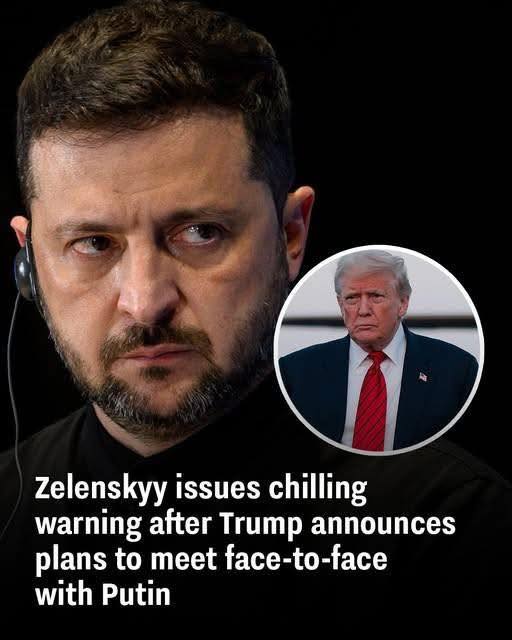The diplomatic stage is set for one of the most consequential — and controversial — political meetings of the year. Former U.S. President Donald Trump, now back in the White House as the 47th President, has announced plans to meet Russian President Vladimir Putin in Alaska on Friday, August 15, 2025.
It will be their first face-to-face encounter since 2019, and the stakes could hardly be higher. Trump has long claimed he could bring an end to the war in Ukraine within “24 hours” of returning to office. Yet after nearly eight months in power, the conflict grinds on, with Russia showing little willingness to make concessions.
Now, the Republican president believes he may be on the verge of a breakthrough.
“The highly anticipated meeting between myself, as President of the United States of America, and President Vladimir Putin, of Russia, will take place next Friday, August 15, 2025, in the Great State of Alaska,” Trump wrote on Truth Social. “Further details to follow. Thank you for your attention to this matter!”
The White House has remained tight-lipped about specifics, but leaks from diplomatic sources suggest the talks could center around a controversial U.S.-backed proposal — one that would involve Ukraine ceding territory in exchange for peace.
The Contested Peace Proposal
According to reporting from CBS News, the proposed deal under discussion would see Ukraine surrender control of parts of the Donbas, Kherson, and Zaporizhzhia regions to Russia, while Moscow would retain Crimea, which it annexed in 2014.
There are conflicting reports about the exact terms. One version of the plan suggests Russia would give up portions of Kherson and Zaporizhzhia where its military control remains partial, in exchange for international recognition of its claims over other occupied territories.
For the Biden-era foreign policy establishment, this would have been unthinkable. But Trump has previously floated the idea of “swapping” territory as a pragmatic — if deeply contentious — path to peace.
Zelenskyy’s Uncompromising Response
Ukrainian President Volodymyr Zelenskyy has made it clear that such an arrangement is unacceptable. In a statement posted to Telegram on Saturday, August 9, he rejected outright any plan that involves ceding Ukrainian territory.
“The answer to Ukraine’s territorial question is already in the constitution of Ukraine,” Zelenskyy said. “No one will and no one can deviate from it. Ukrainians will not give their land to the occupier. Any solutions that are without Ukraine are at the same time solutions against peace. They will not bring anything. These are dead solutions — they will never work.”
Zelenskyy’s message underscores the growing tension between Kyiv and Washington. While Trump insists his aim is to end the war, Ukraine fears being strong-armed into a settlement that undermines its sovereignty and rewards Russian aggression.
Trump’s Self-Imposed Deadline
The planned Alaska meeting comes just days after Trump’s own deadline for the Kremlin to move toward a peace agreement expired. On August 8, he had warned that if Moscow failed to show progress, his administration would impose sweeping new sanctions — including secondary tariffs on nations purchasing Russian oil.
Whether that threat remains on the table, or whether the Alaska summit represents a pivot toward negotiation over punishment, is unclear. Analysts note that Trump has always preferred personal diplomacy, often betting that face-to-face meetings can succeed where traditional diplomacy stalls.
A Meeting Fraught With Risks
Critics argue that Trump’s willingness to entertain territorial concessions plays directly into Putin’s hands, effectively validating Moscow’s military gains. European leaders, already skeptical of Trump’s foreign policy instincts, are reportedly being pressed by Washington to support the deal — a request many see as politically toxic at home.
For Putin, the Alaska meeting is an opportunity to break out of the diplomatic isolation that has defined much of his war effort. For Trump, it’s a high-stakes gamble: broker a historic peace deal and solidify his legacy, or be accused of sacrificing Ukraine’s sovereignty for a political win.
The World Watches
As the August 15 summit approaches, both supporters and critics agree on one thing — the outcome will have profound consequences for the future of Europe’s security order.
Trump and Putin last shook hands in 2019, when the geopolitical landscape looked very different. Now, with tens of thousands dead, millions displaced, and NATO’s unity tested, the stakes are no longer abstract.
For Zelenskyy, the message remains as clear as ever: Ukraine will not barter away its land for peace. For Trump, the question is whether any peace — even one forged through compromise — is better than none at all.
And for the rest of the world, Alaska may become the place where the fate of the Russia-Ukraine war begins its final chapter — or enters an even more dangerous phase.
